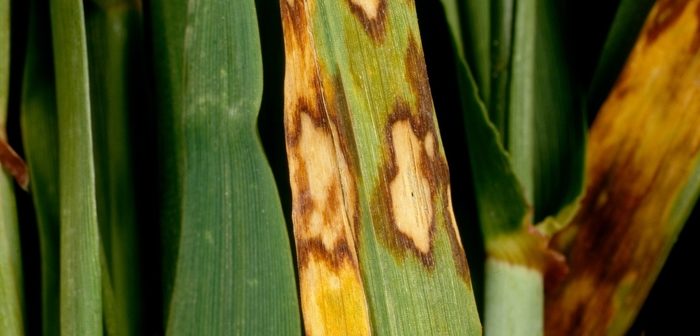Growers are being advised to keep a close eye on winter barley crops this spring as disease threats mount up.
Although many were drilled late, a combination of factors has aligned to create a higher than expected threat. Several later drilled crops are showing signs of stress, possibly leading to a higher mildew threat, while the mild winter has done little to check Rhynchosporium, and in some areas brown rust is breaking out in hybrid varieties.
Borders and Lothian Agrii agronomist Greig Baird notes that in his area winter barley crops are harbouring more disease than winter wheat. Cool easterly winds have dried out mildew in wheat, and Septoria is confined to the lower leaves. Yet barley’s wet weather disease Rhynchosporium can easily be found, as can mildew.
He is also surprised by the level of brown rust in hybrids for this time of year. “I think it shows how mild the winter has been in places,” he notes.
His winter barley T1 choice will be Propel (prothioconazole + bixafen + spiroxamine) because the combination of the three actives covers all these threats.
In the south of England independent AICC agronomist Peter Cowlrick is also seeing widespread brown rust in winter barley. Much of this he puts down to the lack of frosts in southern counties, but he also feels the biomass of hybrids and six-row feed varieties could be a factor. “The hybrids and six row varieties do produce higher yields, partly fuelled by greater biomass. But greater biomass leads to higher canopy humidity, conducive for diseases like Rhynchosporium and brown rust.”
The key he says is protecting new leaves. Where brown rust is firmly established and needs cleaning up, he would recommend adding Comet (pyraclastrobin) to an azole + SDHI mix such as Siltra (prothioconazole + bixafen). But if the disease is restricted to the base of plants, and older leaves, then an azole + SDHI mix by itself will suffice. “If brown rust is established and spreading to new growth then some kickback is desirable. In such situations a strobilurin would be a good addition to T1 or T2 sprays,” he suggests.
ADAS plant pathologist Jonathan Blake says the reason brown rust is more widespread in winter barley is that it is less temperature sensitive than in winter wheat. “In barley the disease isn’t so affected by cooler weather, nor does it respond so aggressively in hot periods. The read across from wheat is poor. It is a completely different pathogen operating to different parameters.”
Despite the mild winter he still believes varietal susceptibility is the key factor. “In the six-row category there are not many varieties that can be considered resistant,” he notes.
The good news is there’s plenty of options for control. “Most azoles and SDHIs have good efficacy and where the disease is firmly established a strobilurin or fast-moving azole such as tebuconazole can be added for some kickback,” he concludes.




